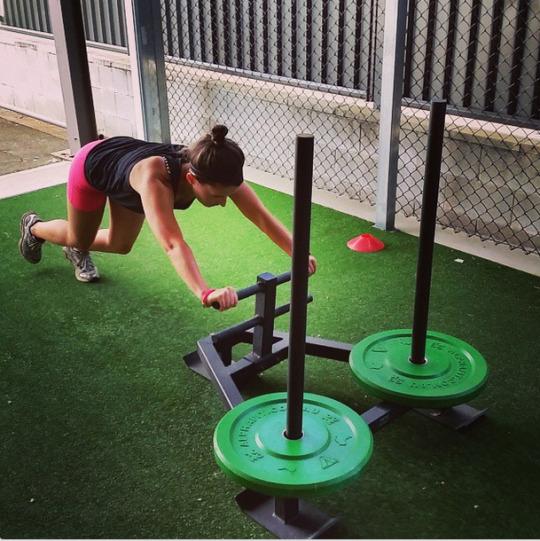It’s springtime once again and it’s time to put on clothes that’s going to show off all the hard work you’ve put in all winter. What? The clothes form last year doesn’t fit so good anymore? Oh well time to hit the stores for some new outfits because your body has started to reshape itself into a healthier and fitter you.
If you haven’t started an exercises program yet, it’s still not too late. Start now and in a few of weeks when temperatures will be in the sweltering range you won’t feel too timid to show off you sexy arms and butt.
A fantastic exercise for your entire lower body is the squat. It works your butt, thighs, calves and hammies. If you don’t have the facilities to do squats, there are alternatives such as the lunge and Bulgarian squats which doesn’t require a squat rack or machine.
A great exercise that can replace the squat is the weighted overhead lunge. Simply hold a ten to twenty pound weight over your head and do lunges in place. After doing these twice per week for three weeks you will definitely need to replace your pants or skirt from last year.
Amy Rushlow talks about using the weighted sled for lower body exercises in the following article. If you have an opportunity to try it you won’t go back to squats.
The Exercise That Tones Your Butt And Thighs

Weighted sled training is having its moment in the spotlight — and it’s about time, fitness pros say. (Photo: Instagram/North_Coast_Strength)
An exercise tool once used predominantly by professional athletes has made its way into the mainstream. The weighted sled — a metal sled that you load with weights and push or pull across the floor — strengthens your thighs, calves, and butt muscles all while giving you a great cardio workout, experts say. Plus: It’s easier on the joints than many alternatives.
“With the popularity of CrossFit in recent years, weighted sled training is indeed becoming more popular. I see sleds at more and more gyms, including Equinox and Golds,” says Neghar Fonooni, a fitness and lifestyle coach based in Santa Monica, California, and the creator of the Lean and Lovely training program.
Boutique studios and group fitness classes, such as Soho Strength Lab and Exceed Physical Culture in New York City, have also started to incorporate weighted sleds into workouts.
Related: The 3-Minute Shredded Arms And Abs Workout
So what’s the appeal? “Weighted sled training is by far one of my favorite ways to work my lower body, burn fat, and develop stellar conditioning and athleticism,” Fonooni tells Yahoo Health. The weighted sled works your thigh muscles (hamstrings and quadriceps), butt muscles (glutes), and your core, all with one tool. Fonooni considers it “one of the best bang-for-your-buck exercises out there.”
In fact, a recent study in the Journal of Strength and Conditioning Research found that pushing the weighted sled is roughly as effective as a traditional back squat for training the legs, butt, and core.
With the rising popularity of sled training, the study’s authors wanted to see how the exercise compared to the king of leg exercises, the barbell back squat. The Canadian research team recruited 10 young men with strength-training experience and instructed them in proper squat and sled push form.
The subjects were randomly assigned to do either a 10-rep-max back squat or 20-step-max weighted sled push. After two to five days, the groups switched, so that everyone completed the two trials. As the subjects were doing the exercises, researchers measured their muscle activity using electrodes that detect the electrical impulses sent to the muscle (which is, put simply, a way to measure how hard a muscle is working).
The results: The exercises were equally effective at working the core and quads. The only major difference was that the sled push worked the calves about 60 percent more than the squat.
You can view the original post here

